- What is Brachycoma?
- Why Grow and Cultivate Brachycoma in Your Garden?
- Growing Tips
- 1. Choosing a Location
- 2. Soil Preparation
- 3. Planting
- 4. Watering
- 5. Fertilizing
- 6. Pruning
- 7. Pests and Diseases
- 8. Winter Care
- 9. Propagation
- 10. Companion Planting
- Choosing the Right Location for Brachycoma
- 1. Sunlight:
- 2. Soil Quality:
- 3. Temperature:
- 4. Wind Protection:
- 5. Watering:
- 6. Space:
- 7. Planting Companions:
- Soil Requirements for Brachycoma
- Soil Preparation
- Irrigation
- Mulching
- Fertilization
- Watering and Fertilizing Brachycoma
- Watering:
- Fertilizing:
- Types and Varieties of Brachycoma
- Questions and Answers:
- What is Brachycoma?
- What are some tips for growing Brachycoma?
- Are there different types and varieties of Brachycoma?
- Can Brachycoma be grown in containers?
- How do you propagate Brachycoma?
- Can Brachycoma tolerate cold temperatures?
- Are there any common pests or diseases that affect Brachycoma?
- Videos: 7 Tips to Grow Great Cabbage, Cauliflower, Broccoli, and More!
Gardening enthusiasts are always on the lookout for new and interesting plants to add to their gardens. One such plant that is becoming increasingly popular is Brachycoma. With its delicate flowers and compact habit, Brachycoma is perfect for adding a touch of color and beauty to any garden.
Brachycoma, also known as the Swan River daisy, is a genus of flowering plants that belong to the family Asteraceae. Native to Western Australia, Brachycoma is a perennial plant that is known for its small, daisy-like flowers in shades of blue, purple, pink, and white. Its compact growth habit, reaching a height of around 15 inches, makes it an ideal choice for border plantings, containers, and hanging baskets.
When it comes to growing Brachycoma, there are a few tips that can help ensure success. First, Brachycoma thrives in full sun, so choose a location in your garden that receives at least six hours of direct sunlight each day. It also prefers well-draining soil, so be sure to amend your soil with organic matter if necessary.
Brachycoma is a relatively low-maintenance plant, but regular watering is essential, especially during dry spells. However, be careful not to overwater, as this can lead to root rot. Mulching around the base of the plant can help conserve moisture and suppress weed growth.
There are several different types and varieties of Brachycoma to choose from, each with its distinct characteristics. ‘Blue Zephyr’ is a popular choice with its vibrant blue flowers and compact growth habit. ‘Mauve Delight’ is another beautiful variety that produces mauve-colored flowers with a delicate fragrance. Other varieties include ‘Dreamtime Pink’ with pale pink flowers and ‘White Scamp’ with pure white flowers.
In conclusion, Brachycoma is a gorgeous flowering plant that can add a splash of color to any garden. With its compact habit and low-maintenance needs, it is an excellent choice for both beginner and experienced gardeners. So why not give Brachycoma a try and create a beautiful and vibrant garden that will be the envy of your neighbors?
What is Brachycoma?
Brachycoma is a genus of flowering plants in the family Asteraceae. It is native to Australia and is commonly known as the “brachycomas” or “creeping daisies.” These small, low-growing plants are known for their dainty flowers and delicate foliage.
The genus Brachycoma consists of around 36 species, with Brachycoma daisies being the most popular and widely cultivated. They are characterized by their small, star-shaped flowers in shades of blue, purple, pink, and white. These blooming flowers bring a touch of beauty to any garden or landscape.
Brachycomas are often used as ground cover or edging plants due to their compact growth habit, reaching a height of only 6 to 12 inches (15 to 30 cm) tall. They are highly versatile and can be grown in various garden settings, such as borders, rock gardens, containers, or hanging baskets.
Key Features of Brachycoma:
- Small, star-shaped flowers
- Compact growth habit
- Low-growing, reaching a height of 6 to 12 inches (15 to 30 cm)
- Available in shades of blue, purple, pink, and white
- Excellent for ground cover and edging
Why Grow Brachycoma?
Brachycomas are popular amongst gardeners for several reasons:
- They are easy to grow and require minimal maintenance. Brachycomas are hardy plants that can tolerate a wide range of growing conditions.
- They add vibrant color to gardens with their beautiful flowers.
- They attract pollinators, such as bees and butterflies, making them beneficial for overall garden biodiversity.
- They are excellent for filling in gaps in flower beds or along pathways.
- They can be used as a border plant to create a neat and tidy edge.
In conclusion, Brachycomas are charming, low-growing plants that offer a splash of color and beauty to any garden. With their versatility and easy-care nature, they are a great choice for both novice and experienced gardeners.
Why Grow and Cultivate Brachycoma in Your Garden?
Brachycoma, also known as the “Swan River daisy”, is a beautiful flowering plant that can add a touch of color and elegance to your garden. There are several reasons why you should consider growing and cultivating Brachycoma in your garden:
- Easy to Grow: Brachycoma is a relatively low-maintenance plant that is easy to grow, even for beginners. It can thrive in a wide range of climates and soil conditions, making it a versatile choice for any garden.
- Beautiful Flowers: The main attraction of Brachycoma is its stunning flowers. They come in various shades of blue, purple, pink, and white, creating a striking display in your garden. The daisy-like flowers have a delicate appearance and are perfect for adding a pop of color to borders, containers, or hanging baskets.
- Long Blooming Season: Brachycoma has a long blooming season, typically from spring to fall. This means you can enjoy its beautiful flowers for a significant portion of the year, bringing continuous beauty to your garden.
- Attracts Pollinators: The vibrant flowers of Brachycoma attract bees, butterflies, and other pollinators to your garden. By growing this plant, you can support the local ecosystem and help pollinators in their important role of plant reproduction.
- Low Water Requirements: Brachycoma is a drought-tolerant plant that requires minimal watering once established. This makes it an excellent choice for water-wise gardens or areas with limited rainfall.
Growing and cultivating Brachycoma in your garden can enhance its beauty and provide numerous benefits. Whether you’re a seasoned gardener or a beginner, this resilient plant is worth considering for your outdoor space.
Growing Tips
1. Choosing a Location
Brachycoma plants thrive in bright, full sun environments. It is important to choose a location that receives at least 6-8 hours of sunlight per day. Additionally, make sure the soil is well-draining to prevent waterlogged conditions that can harm the plants.
2. Soil Preparation
Prepare the soil before planting by removing any weeds, rocks, or other debris. Brachycoma plants prefer soil that is rich in organic matter and slightly acidic to neutral in pH. Adding compost or well-rotted manure to the soil can help improve its fertility and drainage.
3. Planting
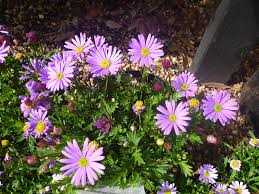
Plant Brachycoma seedlings or seeds in the prepared soil at a spacing of about 6-8 inches apart. Gently pat down the soil around the plants to ensure good contact and stability. If planting in containers, make sure they have drainage holes to prevent waterlogging.
4. Watering
Water Brachycoma plants regularly, keeping the soil evenly moist but not waterlogged. It is recommended to water deeply, allowing the water to penetrate the root zone, rather than shallowly watering the surface. Avoid overhead watering, as it can encourage foliar diseases.
5. Fertilizing
Brachycoma plants are light feeders and do not require heavy fertilization. Applying a balanced, slow-release fertilizer once at the beginning of the growing season should be sufficient. Be careful not to over-fertilize, as this can lead to excessive foliage growth and fewer flowers.
6. Pruning
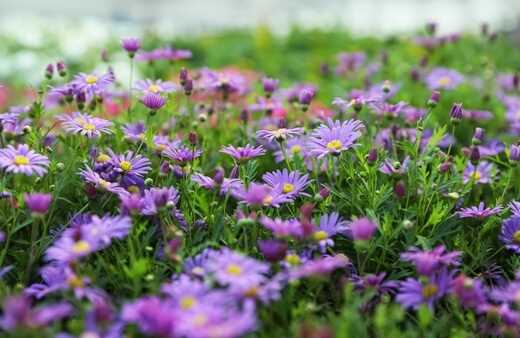
Regularly deadhead the spent flowers to encourage continuous blooming throughout the season. This will also prevent the plant from diverting energy into seed production. Pruning can also be done to shape the plants or remove any dead or damaged foliage.
7. Pests and Diseases
Brachycoma plants are generally resistant to most pests and diseases. However, they can occasionally be affected by aphids, snails, or fungal leaf spots. Monitor the plants regularly and take appropriate action if any pests or diseases are observed. Insecticidal soap or organic pest control methods can be used if necessary.
8. Winter Care
In areas with mild winters, Brachycoma plants can be treated as annuals and replaced each year. If you live in a colder climate, consider overwintering them indoors or protecting them with a layer of mulch or frost cloth. Prune back the plants in late fall to remove any dead or leggy growth.
9. Propagation
Brachycoma can be propagated from seeds or cuttings. Collect seeds from mature flower heads and sow them in a well-draining soil mix. Cuttings can be taken from healthy, established plants and rooted in a propagation medium such as perlite or vermiculite.
10. Companion Planting
Brachycoma plants can be paired with other sun-loving annuals and perennials in garden beds, borders, or containers. Good companion plants include marigolds, zinnias, petunias, and salvias. Avoid planting them near shade trees or tall plants that may overshadow them.
Choosing the Right Location for Brachycoma
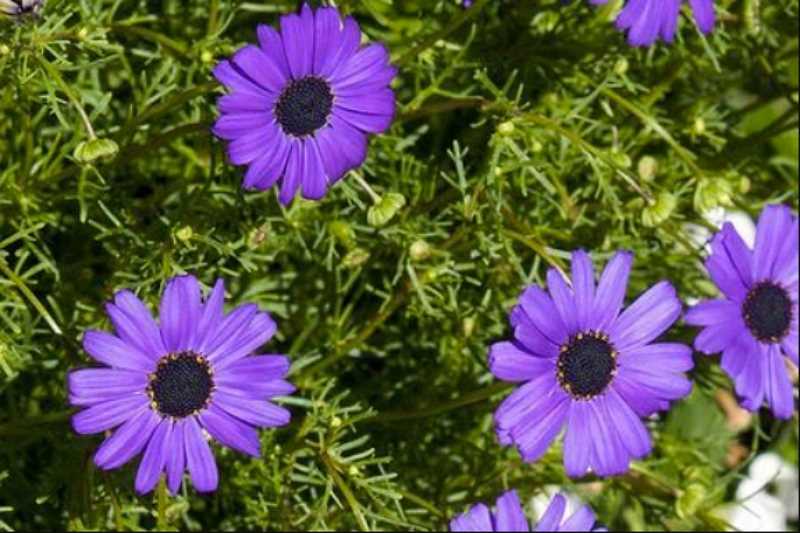
Choosing the right location for your Brachycoma plants is crucial in order to ensure their healthy growth and development. Here are some important factors to consider when selecting a location:
1. Sunlight:
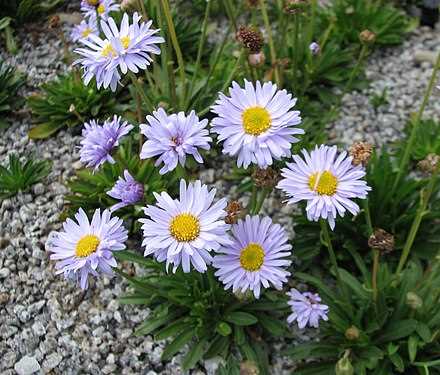
Brachycoma plants thrive in full sunlight exposure. They require at least 6-8 hours of direct sunlight each day to grow and bloom properly. Therefore, it is important to choose a location that receives ample sunlight throughout the day.
2. Soil Quality:
Brachycoma plants prefer well-drained soil that is rich in organic matter. Before planting, make sure to prepare the soil by adding organic compost or well-rotted manure to improve its fertility and drainage. Avoid locations with heavy clay soil or areas prone to waterlogging.
3. Temperature:
Brachycomas are frost-tender plants that prefer moderate temperatures. They thrive in regions with mild winters and warm summers. If you live in a colder climate, consider growing Brachycoma as an annual or in containers that can be moved indoors during the winter months.
4. Wind Protection:
Brachycoma plants have delicate and fragile stems, which can be easily damaged by strong winds. Therefore, it is advisable to choose a location that provides some protection against harsh winds. Planting them near a fence or tall shrubs can help create a windbreak.
5. Watering:
Brachycomas require regular watering, especially during hot and dry periods. Choose a location that is easily accessible for watering, and make sure it has good drainage to prevent waterlogging. Avoid planting them in areas prone to standing water or low-lying areas.
6. Space:
Brachycoma plants have a spreading habit and can grow up to 30 cm in height and width. Make sure to provide enough space for each plant to grow and spread without overcrowding. This will help prevent the risk of diseases and ensure better air circulation.
7. Planting Companions:
Consider planting Brachycomas alongside other low-growing annuals or perennials that have similar light and water requirements. This will not only enhance the visual appeal of your garden but also provide support and protection from pests.
| Summary: |
|---|
| Choosing the right location for your Brachycoma plants is essential for their healthy growth and development. Make sure to select a spot that receives ample sunlight, has well-drained soil, provides some wind protection, and is easily accessible for watering. Also, consider the temperature range and space requirements of the plant. Planting companions with similar needs can enhance the beauty and provide additional benefits to your Brachycoma garden. |
Soil Requirements for Brachycoma
Brachycoma, also known as Swan River daisy, is a beautiful flowering plant that thrives in well-drained soil. To ensure healthy growth and vibrant blooms, it’s crucial to provide the right soil conditions. Here are the soil requirements for Brachycoma:
- Well-Drained Soil: Brachycoma prefers soil that is well-drained to prevent waterlogging, which can cause root rot. Poorly drained soil can lead to the death of the plant.
- Loamy Soil: Loamy soil, which is a mixture of sand, silt, and clay, is ideal for Brachycoma. It provides good drainage while retaining enough moisture for the plant’s needs.
- pH Level: Brachycoma thrives in slightly acidic to neutral soil with a pH level between 6.0 and 7.0. Test your soil’s pH level, and if it’s too acidic or alkaline, you can amend it by adding amendments.
Soil Preparation
Proper soil preparation is essential before planting Brachycoma. Follow these steps to ensure the right soil conditions for your plants:
- Clear the planting area of any weeds or debris that may hinder the growth of Brachycoma.
- Loosen the soil to a depth of at least 6 inches. This helps improve drainage and root penetration. You can use a garden fork or tiller for this task.
- Amend the soil if necessary. If your soil is heavy clay or sandy, you may need to add organic matter such as compost or well-rotted manure to improve its texture and fertility.
- Level the soil surface and remove any large clumps or rocks that could interfere with planting.
Irrigation
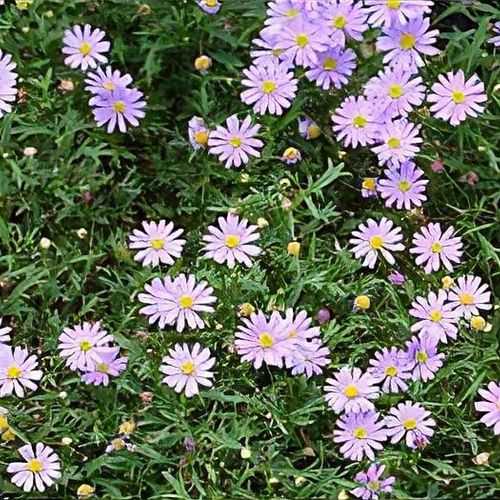
Brachycoma requires regular watering, especially during hot and dry periods. However, overwatering can be detrimental to the plant. Water the plants deeply, allowing the soil to dry slightly between watering sessions. Avoid wetting the foliage, as this can increase the risk of diseases.
Mulching
Mulching around Brachycoma plants can help conserve soil moisture, suppress weed growth, and regulate soil temperature. Apply a layer of organic mulch, such as bark chips or straw, around the plants, taking care to keep the mulch away from the stems to prevent rotting.
Fertilization
Brachycoma benefits from regular fertilization to support healthy growth and abundant blooms. Apply a balanced slow-release fertilizer according to the package instructions. Avoid over-fertilizing, as this can lead to excessive vegetative growth and fewer flowers.
By providing the right soil conditions and proper care, you can enjoy a thriving Brachycoma garden filled with colorful flowers throughout the growing season.
Watering and Fertilizing Brachycoma
Proper watering and fertilization are essential for the healthy growth and blooming of Brachycoma plants. Here are some tips to help you water and fertilize your Brachycoma correctly:
Watering:
- Brachycoma plants prefer consistently moist soil, but they don’t tolerate waterlogged conditions. Ensure the soil is well-drained to prevent root rot.
- Water the plants deeply once or twice a week, depending on the weather conditions. You can use a soaker hose or a watering can with a gentle shower setting to avoid damaging the delicate flowers and foliage.
- Monitor the moisture level of the soil regularly, and adjust the frequency and amount of water accordingly. Aim for evenly moist soil, taking care not to let it dry out completely.
- During hot, dry periods, Brachycoma plants may require more frequent watering to prevent wilting.
Fertilizing:
- Feed Brachycoma plants with a balanced liquid fertilizer every 4-6 weeks during the growing season. Choose a fertilizer with equal amounts of nitrogen, phosphorus, and potassium (NPK).
- Alternatively, you can use a slow-release granular fertilizer once at the beginning of the growing season.
- Follow the manufacturer’s instructions for the correct dosage and application method.
- Avoid excessive fertilization, as it can lead to leggy growth and reduced blooming.
Remember to always water the plants before applying fertilizer to prevent root burn.
By providing the right amount of water and nutrients, you can ensure the vigorous growth and abundant flowering of your Brachycoma plants.
Types and Varieties of Brachycoma
Brachycoma is a genus of flowering plants in the Asteraceae family. Here are some popular types and varieties of Brachycoma:
- Brachycoma daisies: These are the most commonly grown Brachycoma plants and are known for their small, daisy-like flowers. The flowers come in various colors, including white, pink, blue, and purple.
- Brachycoma multifida: This variety of Brachycoma is also known as cut-leaf daisy. It has deeply lobed leaves and produces clusters of small, yellow flowers. It is a popular choice for rock gardens and borders.
- Brachycoma ciliaris: Also known as Swan River daisy, this variety features vibrant blue or purple flowers with yellow centers. It is a perennial plant that can be grown as an annual in some regions.
- Brachycoma ericoides: This Brachycoma variety has needle-like leaves and small, star-shaped white flowers. It is commonly grown as a ground cover or in hanging baskets.
- Brachycoma brachysema: This variety is native to western Australia and features delicate purple flowers with yellow centers. It is a low-growing plant that is ideal for rockeries and borders.
These are just a few examples of the types and varieties of Brachycoma available. Each variety has its own unique characteristics and growing requirements, so be sure to choose the one that best suits your garden and climate.
Questions and Answers:
What is Brachycoma?
Brachycoma is a genus of flowering plants that belong to the family Asteraceae. These plants are commonly known as Swan River Daisy or cut-leafed daisies. They are native to Australia and are popular for their beautiful and delicate flowers.
What are some tips for growing Brachycoma?
To grow Brachycoma successfully, it is important to provide them with full sun exposure and well-drained soil. They prefer a slightly acidic soil pH and moderate watering. Deadheading the flowers regularly will help promote continuous blooming. It is also recommended to mulch around the plants to retain moisture and suppress weed growth.
Are there different types and varieties of Brachycoma?
Yes, there are different types and varieties of Brachycoma available. Some popular ones include Brachycoma multifida, Brachycoma bellidioides, and Brachycoma brachyptera. These varieties differ in flower color, leaf shape, and growth habit. It is best to choose the variety that suits your garden’s conditions and your personal preference.
Can Brachycoma be grown in containers?
Yes, Brachycoma can be successfully grown in containers. Choose a well-draining potting mix and a container with good drainage holes. Place the container in a sunny spot and water the plant regularly, allowing the soil to dry out slightly between waterings. Deadhead the spent flowers to encourage continuous blooming. Container-grown Brachycoma can be a great addition to a patio or balcony garden.
How do you propagate Brachycoma?
Brachycoma can be propagated through both seeds and cuttings. To grow Brachycoma from seeds, sow them in a well-draining seed starting mix and keep them in a warm and moist environment until they germinate. Once the seedlings are large enough, they can be transplanted into individual pots or directly into the garden. Cuttings can be taken from the tips of the plant in spring or summer and rooted in a moist potting mix. Keep the cuttings in a warm and humid environment until they develop roots.
Can Brachycoma tolerate cold temperatures?
Brachycoma is generally frost tender and may not tolerate very cold temperatures. It is best to plant them in the spring and enjoy their blooms throughout the summer. If you live in a region with cold winters, you can try growing Brachycoma as an annual or overwinter them indoors in a cool but frost-free location.
Are there any common pests or diseases that affect Brachycoma?
Brachycoma is generally resistant to pests and diseases. However, they may occasionally be affected by aphids, snails, or slugs. Regularly inspect the plants for any signs of infestation and take appropriate measures to control them. Providing adequate spacing between the plants and good air circulation can also help prevent fungal diseases.







